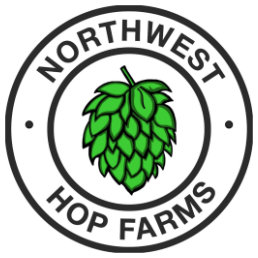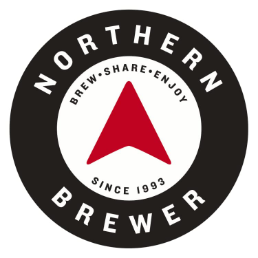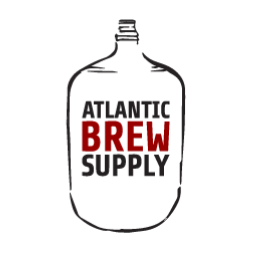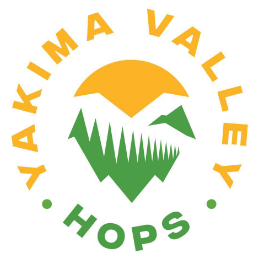Cascade Hop
| Purpose: | Dual |
|---|---|
| Country: | United States of America (USA) |
| International Code: | CAS |
| Cultivar/Brand ID: | USDA 56013 |
| Comparison | Compare with other hops |
Purchase Cascade Hops
Cascade hops are available to be purchased at multiple suppliers. We've conveniently linked to the most popular hop suppliers as well as Amazon.com. Every supplier may have different prices, harvest years and amounts available for purchase.
Origin and Geneology of the Cascade Hop
Cascade was developed in the USDA breeding program at Oregon State University, and released to the public in 1972. It was originally created from a cross between Fuggle and the Russian hop Serebrianka in 1967. Cascade was initially only known by its number designation of USDA 56013.
Despite being known primarily as an American variety, today there are also New Zealand, Argentinian, and Australian varieties of Cascade.
US hops begin to be harvested in mid-to-late August for most aroma varieties.
Flavor & Aroma Profile of Cascade Hops
Cascade is a dual-purpose hop that can be used in all hop additions throughout the brewing process.
Cascade is the hop variety that made hops famous. It single-handedly defined the American Pale Ale style.
Defined by its citrus, and often more specifically grapefruit flavor, this hop accounts for around 10% of the US's harvest of hops. Cascade also has a medium-intense floral and spice citrus qualities. When used as a bittering hop, it imparts moderate bitterness. It is most famous for being the finishing hop in Sierra Nevada's Pale Ale, widely considered the beer that launched the IPA and bitter beer craze.
Cascade hops are widely available and are grown in multiple countries. It is usually packaged hop pellets, but is sometimes available fresh around harvest time. Cascade hops can grown at home since they are not a trademarked variety.
Read More: The Most Common Hops Used in IPAs
Tags: #grapefruit #floral #spicy #citrus #pine
Brewing Values for Cascade Hops
These are the common ranges that we've seen with Cascade hops over the years. Each year's crop can yield hops that have slightly different qualities, so these number ranges are based on history.
| Alpha Acid % (AA) Alpha acids are the main source of bitterness in beer. Longer boil times will result in isomerization of more alpha acids leading to increased bitterness. Learn more » | 4.5-9%6.8% avg |
|---|---|
| Beta Acid %Beta acids are a component of hop resins responsible for contributing volatile aromatic and flavor properties. Beta acids contribute no bitterness. | 4.8-7.5%6.2% avg |
| Alpha-Beta RatioThe ratio of alpha to beta acids dictates the degree to which bitterness fades during aging. 1:1 ratios are common in aroma varieties. | 1:1 - 2:11:1 avg |
| Hop Storage Index (HSI)The HSI indicates the percent of alpha and beta acids lost after 6 months of storage at room temperature (68°F or 20°C). The freshest hops will always be the best. | 36% (Fair) 0.221-0.50 |
| Co-Humulone as % of AlphaLow cohumulone hops may impart a smoother bitterness when added to the boil as opposed to higher ones that add a sharper bitterness to the final beer. Learn more » | 30-40%35% avg |
| Total Oils (mL/100g)These highly volatile, not very soluble oils are easily boiled off, but add flavor and aroma to the finished beer when added very late in the boil or during fermentation. Learn more » | 0.7-2.5 mL1.6mL avg |
| Total Oil Breakdown: | |
| › MyrceneFlavors: resinous, citrus, fruity (β-myrcene) | 45-60%52.5% avg |
| › HumuleneFlavors: woody, noble, spicy (α-caryophyllene) | 8-20%14% avg |
| › CaryophylleneFlavors: pepper, woody, herbal (β-caryophyllene) | 3-9%6% avg. |
| › FarneseneFlavors: fresh, green, floral (β-farnesene) | 3-9%6% avg |
| › All OthersIncluding β-pinene, linalool, geranoil & selinene | 2-41% |
Hop Pairings with Cascade Hops
Some hops just taste better together. We recently analyzed [1] hundreds of the most popular beers to find which hops are commonly paired together. We found that Centennial, Chinook, Simcoe, Columbus, Citra & Mosaic hops are commonly used alongside the Cascade hop. This is not a complete list, but should give you a good idea of what hops are commonly used together.
Here is the relative frequency of the top 6 hops that are used with Cascade:
Beer Styles using Cascade Hops
Some popular beer styles that make use of the Cascade hop include American Ale, IPA, Porter, Barleywine, Witbier, Pale Ale & American Pale Ales.
Cascade is also sometimes featured as a single hop in beers to highlight its unique flavors and aromas. It can be added either as a fresh hop, or via hop pellets. Some popular examples of commercial beers that use 100% Cascade hops in their recipes are Sierra Nevada Single Hop IPA Cascade, Anchor Liberty Ale & Deschutes Mirror Pond Ale.
Cascade Hop Substitutions
If the Cascade hop is hard to find or if you are simply out of it on brew day, you can try to substitute it with a similar hop. The old way of choosing replacement hops was done by experience and "feel". There is nothing wrong with that way. However, we wanted to build a data-driven tool to find your Cascade substitutions.
Experienced brewers have chosen the following hop varieties as substitutions of Cascade:
Is Cascade available in lupulin powder?
Yes! There is a version of the Cascade hop in lupulin powder form. Cascade lupulin powder is suggested to be used at about half the amount as you'd normally use with pellets. The Cryo/LupuLN2 (Yakima Chief Hops), Lupomax (Haas) and Hopsteiner products are pure concentrated lupulin powder, which add big flavor when used in the whirlpool or dry hop additions.
Cascade Hop Statistics
We love statistics. We've analyzed hundreds of IPAs, dug into the Hop Growers of America's annual reports[2] and researched the history behind some of the most popular beer ingredients. Here are a few of the things we've found interesting about the Cascade hop:
- In 2019, Cascade was the United States' 3rd most produced hop.
- Cascade lost 22% of its growing acreage between 2014 and 2019.
Embed This Information
You can embed the information we have on the Cascade hop on your own website. Just copy the code below and paste it anywhere on your site.
<div class="bmhop" data-hop="23"></div> <script src="https://beermaverick.com/embed.js?v1"></script>
If you see an error in our data, please let us know!
We are not affiliated with any hop manufacturer. All copyrights and data are provided by their respective owners.







